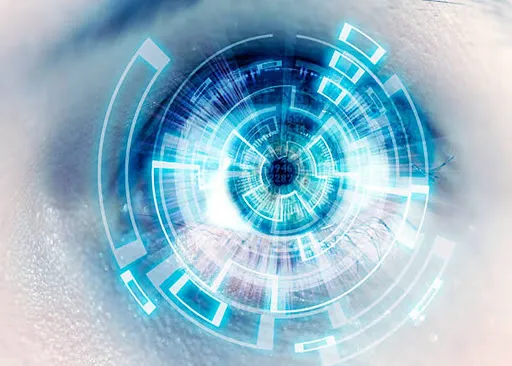The development of biometric security has advanced, whereas authentication systems still face substantial security risks due to vulnerabilities. Modern security bypasses occur through high-resolution images and deepfake detection technology, which requires advanced and secure authentication tools to stop identity fraud.
The technology behind iris recognition has developed, although it still confronts critical hurdles because synthetic iris pictures trick the system 50% of the time, while digital pictures work around scanners. Better authentication solutions are required to meet present needs.
The protection of sensitive data depends on reliable authentication methods. Multi-factor authentication techniques enhance security system protection, while experts emphasize that anti-spoofing mechanisms must be strengthened to defend digital identities completely.
How Does an Iris Scan Enhance Security?
The unique eye patterns used in iris scanning systems ensure enhanced security by maintaining stable identification data throughout each individual’s lifetime. Advanced technology uses detailed iris image recording methods to deliver accurate identification results in secure, high-security situations. The recognition method based on iris patterns provides stable and dependable authentication because scannable patterns do not diminish with usage like fingerprints. Financial institutions, alongside government agencies, choose iris scans because they present a lower risk of identity fraud.
Rephrase the following sentence. The inability of hackers to outsmart iris recognition systems stems from their inability to circumvent the advanced detection methods that identify artificial imagery. Scanning systems featuring high-resolution technology succeed better at distinguishing genuine human irises from artificial duplicates. Experts in security advocate that iris scanning technology should be used to maintain high-security access points and prevent fraud. The evolution of cyber threats requires biometric security to continuously develop new capabilities that counter modern, sophisticated spoofing methods.
The Evolution of Iris Recognition Technology
Technological developments in iris recognition systems have transformed the technology into sophisticated AI-powered security methods. Modern systems rely on deep learning to enhance identification precision since early models experienced accuracy issues. AI and machine learning techniques help security systems identify counterfeit eye irises to stop unauthorized personnel access. The security field continuously optimizes these systems to counteract new types of fraud that appear in the market.
Current iris scanners operate faster than ever and solve demanding authentication requirements more effectively. Real-world implementations benefit from AI-based models that extract complex pattern relationships to boost accuracy. Machine learning technologies enable recognition systems to adjust better to various environmental conditions, which enhances their reliability. Ongoing advancements will shape the future of biometric security across industries.
Comparing the Retina Scanner and Iris Scan Technology
Security systems using retina scanners and iris scans serve unique identification functions while providing enhanced protection. Eye retina scanners verify security by analyzing blood vessel arrangements positioned at the back of the eye. Iris scans deliver faster results when they read pattern details within the colored section of the eyes. The accuracy rates of these methods are comparable, although iris scanning proves to be more accessible to users.
Patient verification in secure medical records access depends on using retina scanners in healthcare facilities. International passengers can use iris scanners as a fast authentication method at airport immigration checkpoints. Financial institutions select iris recognition technology because it provides safe banking operations and defends against fraud. The chosen technology between retina and iris depends on both security regulations and practical utilization standards.
Why Iris Retina Scanners Are the Future of Authentication?
Iris and retina scanners will define authentication security because they offer high reliability and excellent protection levels. Iris and retina scanners provide government institutions with tools to decide national identity and border protection solutions and combat fraudulent activities. These identity authentication systems serve banks to verify their digital banking customers’ identities and ensure transaction security. These facilities deploy them as contactless systems to identify patients and access medical records.
Contactless authentication systems improve sanitation and accessibility in areas with heavy traffic flow. The current scanning technology enables smooth access control operations without impacting the duration of the security process. The detection capabilities of AI-powered iris recognition software, coupled with its ability to decrease the chances of spoofing attempts, are crucial system improvements. Additional developments in digital security threats will make biometric authentication a required method for securing sensitive information.
Conclusion
Iris recognition technology will adapt to rising security requirements while delivering faster and more precise authentication solutions to high-security applications in digital environments. The improved detection of spoofing attempts through new artificial intelligence systems will boost biometric security measures. Due to increasing digital activity, iris-based authentication technology will establish itself as the standard practice for secure digital identity confirmation. The application of biometric data identification will provide businesses with secure financial tools as well as fraud-detection systems, but governments intend to establish border security protocols with this technology. Healthcare institutions will depend on iris scan technology to verify their patients. In the future, digital identity protection strategies will heavily depend on iris-based security methods.
